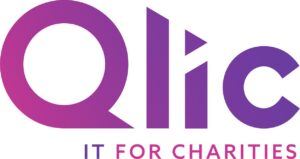
Social Impact Assessment for nonprofits is a significant tool for evaluating how a charity’s activities affect communities, individuals, and the environment. It ensures that nonprofits remain accountable to their stakeholders while staying true to their purpose. In the nonprofit sector, every decision and initiative should line up with the organisation’s mission and the social impact it aims to achieve.
Aligning a charity’s digital strategy with its mission and social impact goals is a fundamental part of this process. For example, adopting sustainable IT solutions can help charities achieve their goals more effectively while reducing environmental impact, demonstrating a commitment to both social and environmental responsibility.
Today, nonprofits must not only address pressing social issues but also consider their environmental footprint. For environmental nonprofits such as organisations working on forest conservation or clean water access, this alignment is natural as their social and sustainability goals are inherently connected. For other nonprofits organisations, environmental responsibility becomes an additional but crucial part of their work.
Sustainability, however, is only one example of the positive impact charities can have. In this blog, we’ll explore key aspects of Social Impact Assessment, including:
- Understanding Social Impact Assessment
- Examples of social impact
- Why it matters for charities
- How to conduct a Social Impact Assessment
What is Social Impact Assessment (SIA)?
The Urban Governance for Health and Well-being defines a ‘Social Impact Assessment (SIA) as a structured process for analysing, monitoring, and managing the intended and unintended social consequences of a planned project or policy‘. It helps organisations gain significant insights into how their initiatives impact the environment and the communities around them, helping them measure the social implications of their activities and address challenges proactively.
SIA employs two primary methods of evaluation: qualitative and quantitative assessments.
- Qualitative Assessments: These focus on the personal stories and experiences of beneficiaries. Through case studies, interviews, and testimonials, qualitative assessments capture the emotional and social dimensions of an organisation’s impact. For example, hearing how a charity’s programs have transformed people’s quality of life offers convincing evidence of its effectiveness.
- Quantitative Assessments: By contrast, quantitative assessments rely on data collection and measurement to demonstrate the social impact nonprofits have. Metrics such as the number of individuals served, percentage improvements in specific outcomes, or the monetary value of benefits delivered provide a clear, data-driven picture. For instance, a literacy program might report a 25% increase in reading proficiency among participants. Charities may also assign monetary value to social outcomes, allowing stakeholders to grasp the economic significance of their initiatives.
Examples of Social Impact
Social Impact Assessments showcase how nonprofits create meaningful change and foster social good in communities. Below are key areas of social impact, supported by examples of charities partnered with Qlic:
- Improving Access to Healthcare
- Increasing Access to Quality Education
- Promoting Human Rights
- Sustainability
- Economic Empowerment
Improving Access to Healthcare
Nonprofits play a key role in addressing healthcare disparities, particularly in underserved communities. For instance, Healthwatch Stockport, supported by Qlic, allows individuals to access and navigate healthcare services, ensuring their voices are heard and their needs met. By bridging gaps in healthcare and advocating for better systems, such initiatives improve the well-being of the most vulnerable populations.
Increasing Access to Quality Education
Education is the foundation of social progress and a powerful tool for social transformation, and nonprofits are working to guarantee it is accessible to all. For example, IntoUniversity, supported by Qlic, provides educational programs and resources to young people from disadvantaged backgrounds, helping them achieve their full potential. By adopting aspirations and supporting academic success, IntoUniversity equips students with the skills and confidence needed for long-term success in education and beyond.
Promoting Human Rights
Advocating for dignity and equality is at the heart of many nonprofits’ missions. This includes promoting diversity and inclusion, protecting minorities, and retaining shared beliefs, customs, and languages. For instance, the Peaceful Change Initiative, supported by Qlic, works to promote social cohesion and resolve conflicts in divided communities. By fostering dialogue and understanding, this charity helps protect the rights of vulnerable groups and builds inclusive societies where everyone has the opportunity to thrive.
Sustainability
Environmental sustainability is essential for ensuring the well-being of future generations. For example, CAPE (Community Action Partnership in Ealing) runs initiatives to promote sustainable development and reduce environmental impact while supporting sustainable practices within local communities. Through their programs, CAPE empowers individuals to adopt eco-friendly habits and contributes to a healthier planet by raising awareness and driving positive environmental change.
Economic Empowerment
Nonprofits often support disadvantaged communities or small businesses by providing resources, training, and opportunities for growth. Initiatives like fair trade programs, employment training, and microfinancing enable individuals and communities to improve their living conditions. For example, nonprofits like the York Road Project empower individuals through job training and skill development. They’ve helped participants secure employment, achieving greater independence and financial stability. By fostering economic empowerment, these organisations help break the cycle of poverty in both developed and developing countries and create pathways to financial independence.
By supporting these impactful charities, Qlic highlights how collaborative efforts can drive profound social and environmental change. Each initiative demonstrates the transformative potential of nonprofits to address critical global challenges.

Social Impact Measurement for Nonprofits: Why Does it Matter?
Measuring social impact is undoubtedly a challenging task for nonprofits, but it’s an essential part of fulfilling their mission. It not only ensures alignment with their strategy but also fosters transparency and accountability, building trust among donors, beneficiaries, and partners. By evaluating their potential social impact, charities can showcase their achievements, improve their operations, and strengthen their position in the nonprofit sector.
Here’s why social impact measurement matters:
Attract New Donors
Demonstrating tangible results is one of the most effective ways to secure funding. Potential donors are more likely to contribute when they can see the real difference their support makes. One way for nonprofits to attract new donors and showcase their results effectively is through fundraising campaigns, using tools like Microsoft Ads for social impact and online fundraising platforms. These tools can help amplify their reach and engage with new audiences, further boosting their fundraising efforts.
Increased Trust and Accountability
When charities present clear, measurable outcomes, they build trust with stakeholders, including donors, beneficiaries, and partners. This transparency improves the organisation’s public image and fosters accountability. It also strengthens donor confidence, encouraging ongoing support. To maintain trust, nonprofits must also ensure that their operations and partners, such as IT support companies, align with best practices and ethical standards.
Improved Brand Reputation
Collecting and sharing data and success stories about social impact contributes to a nonprofit’s storytelling and marketing efforts. An effective narrative backed by evidence not only boosts brand reputation but also helps attract partnerships, volunteers, and supporters. By highlighting their achievements, nonprofits can position themselves as leaders in their field.
Identify Areas for Improvement
Social impact measurement isn’t just about celebrating successes; it’s also a significant tool for identifying areas where programs can be improved. By analysing what works and what doesn’t, nonprofit organisations can refine their strategies, make data-driven decisions and allocate their resources efficiently and effectively.
Measuring social impact allows nonprofits to remain focused on their mission while demonstrating their value to the communities they serve. It’s a vital practice that helps charities grow, adapt, and continue making a difference.
Key Steps to Conduct an Impact Assessment for Charities
Conducting an impact assessment is essential for charities to strengthen their corporate social responsibility. By following a structured process, nonprofits can effectively measure and showcase their impact, while also identifying areas for improvement.
Below are the key steps to performing an impact assessment:
- Scope Your Assessment & Map Impacts
- Assess Materiality & Test the Impact Pathway
- Calculate Impacts
- Communicate Results
Scope Your Assessment & Map Impacts
The first step in an impact assessment is defining what you’re measuring. This could involve evaluating the entire organisation or focusing on specific projects or initiatives. Once the scope is clear, map out:
- The inputs (resources used)
- Activities (actions taken)
- Outputs (immediate results)
- Outcomes (short-term effects) and ultimate impacts (long-term changes)
Tools like impact pathways (also called the Theory of Change), to break down your organisation’s activities and expected impacts to make assessing them easier.
Assess Materiality & Test the Impact Pathway
Not all impacts are equal in importance. Identify the most important and appropriate ones by considering their magnitude and significance to stakeholders. Consider factors such as:
- Attribution: How much of the impact is directly attributable to your organisation’s efforts?
- Deadweight: What would have happened even without your intervention?
- Duration: How long do the effects of your activities last?
Testing these factors ensures the assessment shows the organisation’s genuine contributions and provides a more accurate picture of its impact.
Calculate Impacts
Once the pathway and material impacts are clear, gather the necessary data. This may include both primary data (e.g., surveys, interviews) and secondary data (e.g., industry benchmarks, reports). For more accurate reporting, consider quantifying or monetising the impacts. For example, you could calculate a Social Return on Investment (SROI) to express the social value generated per input cost. While making calculations, transparency is fundamental, use conservative estimates to avoid over-claiming impacts.
Communicate Results
You achieve great results so now it’s time to sharing them with world! Sharing your positive impact effectively is crucial to engaging stakeholders and attracting support. Tailor your communication to specific audiences such as donors, beneficiaries, or partners and present clear, credible, and compelling narratives. Support your story with data and case studies for greater engagement. Use a mix of channels, including reports, social media, email campaigns, and your website, to reach the widest audience. For tips on boosting your digital outreach, explore our blog, Social Media for Charities.
Conclusion
By following these steps, charities can positively measure and share their social impact, building trust and demonstrating the value they bring to their communities.
Measuring social impact is an important practice for nonprofits, as this can help them make informed decisions and understand their contributions, communicate their achievements, and identify areas for growth.
Having the right digital tools and a digital transformation strategy in place is crucial for measuring social impact effectively. By implementing a sustainable IT strategy, nonprofits can align with their corporate social responsibility goals while strengthening their core mission, messaging, and stakeholder trust.
Would your charity like to explore how to optimise your IT infrastructure to maximise your social impact? Get in touch with the team at Qlic here.






